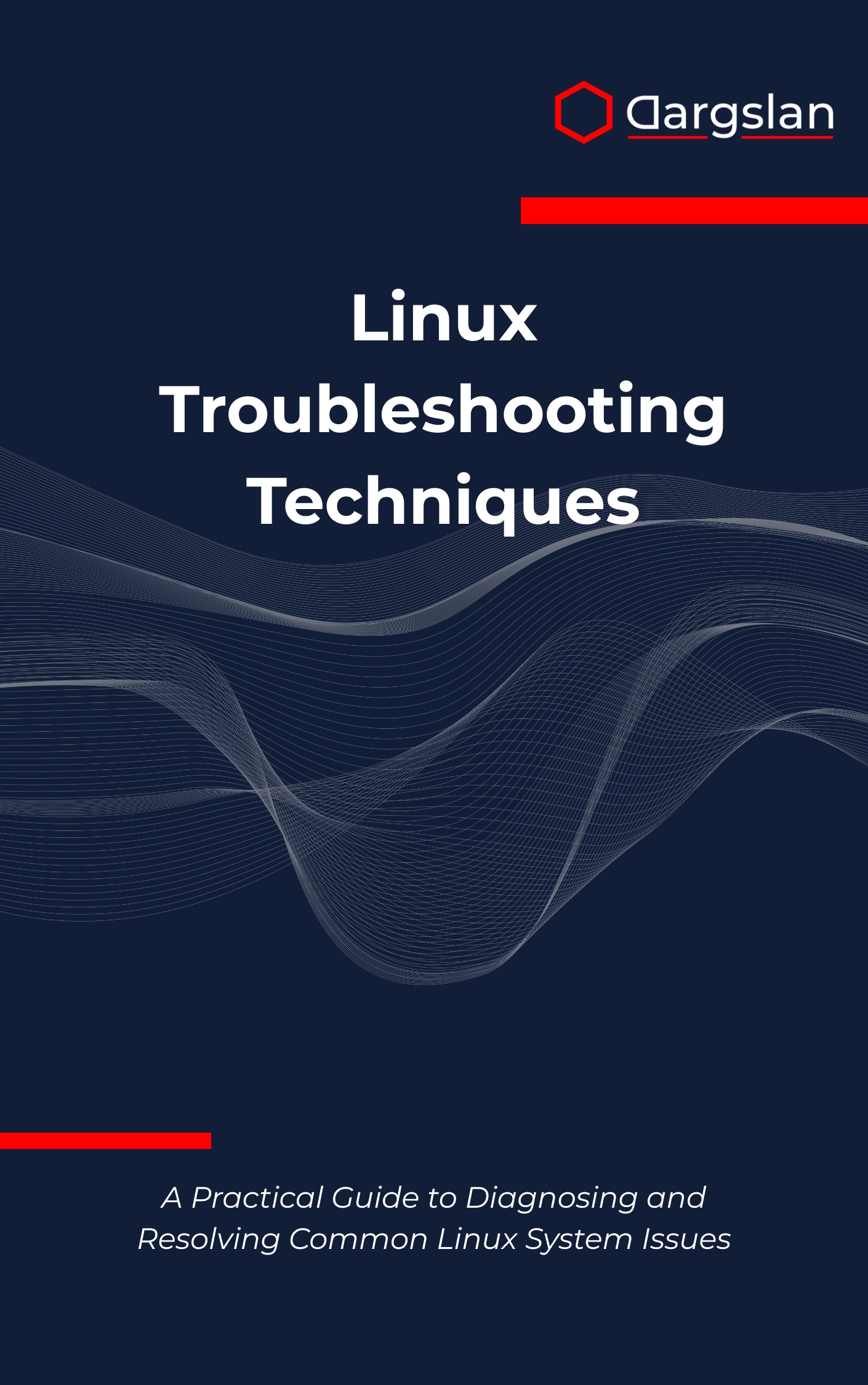Linux Troubleshooting Techniques
Linux Troubleshooting Techniques,Diagnose and fix common Linux issues quickly with step-by-step troubleshooting methods.

When a Linux server won’t boot, a service keeps crashing, or performance tanks without warning, you need more than guesswork—you need a repeatable plan. This book gives you the confidence and structure to diagnose problems fast and restore stability with precision.
From first symptom to verified fix, you’ll learn how to unravel complex issues using proven workflows, modern tools, and distribution-agnostic practices that work in any environment.
A Practical Guide to Diagnosing and Resolving Common Linux System Issues
Overview
Linux Troubleshooting Techniques is your field-tested playbook for going from incident to resolution with speed and clarity. Designed as A Practical Guide to Diagnosing and Resolving Common Linux System Issues, it teaches universal Linux troubleshooting methodologies that apply across Ubuntu, CentOS, Red Hat Enterprise Linux, SUSE, and beyond.
Each chapter blends concept overviews with hands-on procedures, so you can master boot process diagnosis, system service management, file system troubleshooting, and disk space management. You’ll confidently handle authentication issues and permission problems, restore network connectivity, perform performance analysis, and resolve software installation and application debugging challenges without downtime.
The book doubles as an IT book, a pragmatic programming guide to system behavior, and a deeply researched technical book for production teams. You’ll leverage system monitoring, log analysis, essential diagnostic tools, and step-by-step recovery procedures to address real-world outages and edge cases with a calm, professional approach.
Beyond fixes, you’ll adopt a structured mindset that reduces mean time to repair, prevents regression, and documents what works—so you and your team get faster with every incident.
Who This Book Is For
- Linux administrators who want reliable workflows to pinpoint root causes and implement durable fixes under pressure.
- DevOps and SRE professionals aiming to standardize incident response, automate checks, and tighten SLAs with measurable outcomes.
- Help desk, support engineers, and aspiring sysadmins ready to level up with production-ready skills and join on-call rotations with confidence.
Key Lessons and Takeaways
- Develop a repeatable troubleshooting framework—triage, isolate, test, fix, and verify—so every issue follows a clear, auditable path.
- Use the right tool for the job: combine logs, metrics, and system state to correlate symptoms with causes and avoid guesswork.
- Turn lessons into prevention by documenting patterns, creating runbooks, and applying backups, rollbacks, and recovery plans.
Why You’ll Love This Book
It’s practical from page one. You get step-by-step guidance, checklists, and decision trees that shorten the distance between discovery and resolution.
The distribution-agnostic approach teaches core Linux concepts first, then shows where tools differ across Ubuntu, CentOS, RHEL, and SUSE. Real-world scenarios mirror what you’ll see in production, including flaky services, misconfigured permissions, DNS failures, and resource contention.
Extensive appendices provide quick-reference commands, sample incidents with full solutions, interview questions for Linux roles, and curated links to documentation portals—perfect for both preparation and day-to-day administration.
How to Get the Most Out of It
- Start with the troubleshooting methodology chapter, then work through core domains: boot and init, services, storage and file systems, networking, performance, and recovery. Use appendices as your on-call quick reference.
- Apply concepts to your environment: practice log analysis on recent incidents, map your service dependencies, and baseline normal performance to spot anomalies faster.
- Build mini-projects: simulate a failed service and recover it with systemd; diagnose and fix a full disk scenario; trace a slow query to a CPU or I/O bottleneck; rehearse disaster recovery from verified backups.
Troubleshooting Themes You’ll Master
- Boot process diagnosis: understand firmware, bootloader, kernel, initramfs, and user space handoffs to pinpoint where startup fails.
- System service management: control systemd units, analyze dependencies, and stabilize services with health checks and restarts.
- File system troubleshooting: recover from corruption, repair inode issues, and resolve NFS and permission conflicts with minimal disruption.
- Disk space management: find unexpected growth, clean safely, and prevent log explosions with rotation, quotas, and monitoring.
- Authentication issues and permission problems: trace PAM and NSS, fix sudo and SSH misconfigurations, and correctly set ownership and ACLs.
- Network connectivity: diagnose DNS, routing, and firewall rules; validate ports and TLS; and resolve intermittent packet loss.
- Performance analysis: profile CPU, memory, disk, and network; spot resource contention; and tune kernels, services, and queries.
- Software installation and application debugging: resolve dependency conflicts, isolate library issues, and troubleshoot containerized apps.
- Backup strategies, system monitoring, log analysis: design retention policies, alert on leading indicators, and build dashboards that drive action.
- Diagnostic tools and recovery procedures: use journalctl, strace, lsof, iostat, tcpdump, and rescue environments to restore service fast.
What Sets It Apart
Written by seasoned Linux professionals, the guidance is both conceptual and actionable. You’ll move beyond command memorization to reasoning skills that scale across teams and toolchains.
Each workflow includes verification steps and rollback options, so fixes are safe and repeatable. You’ll reduce firefighting, capture institutional knowledge, and elevate your reliability practice.
Get Your Copy
Be the person who brings systems back online quickly—and keeps them stable. Equip yourself with proven methods and production-grade techniques today.




